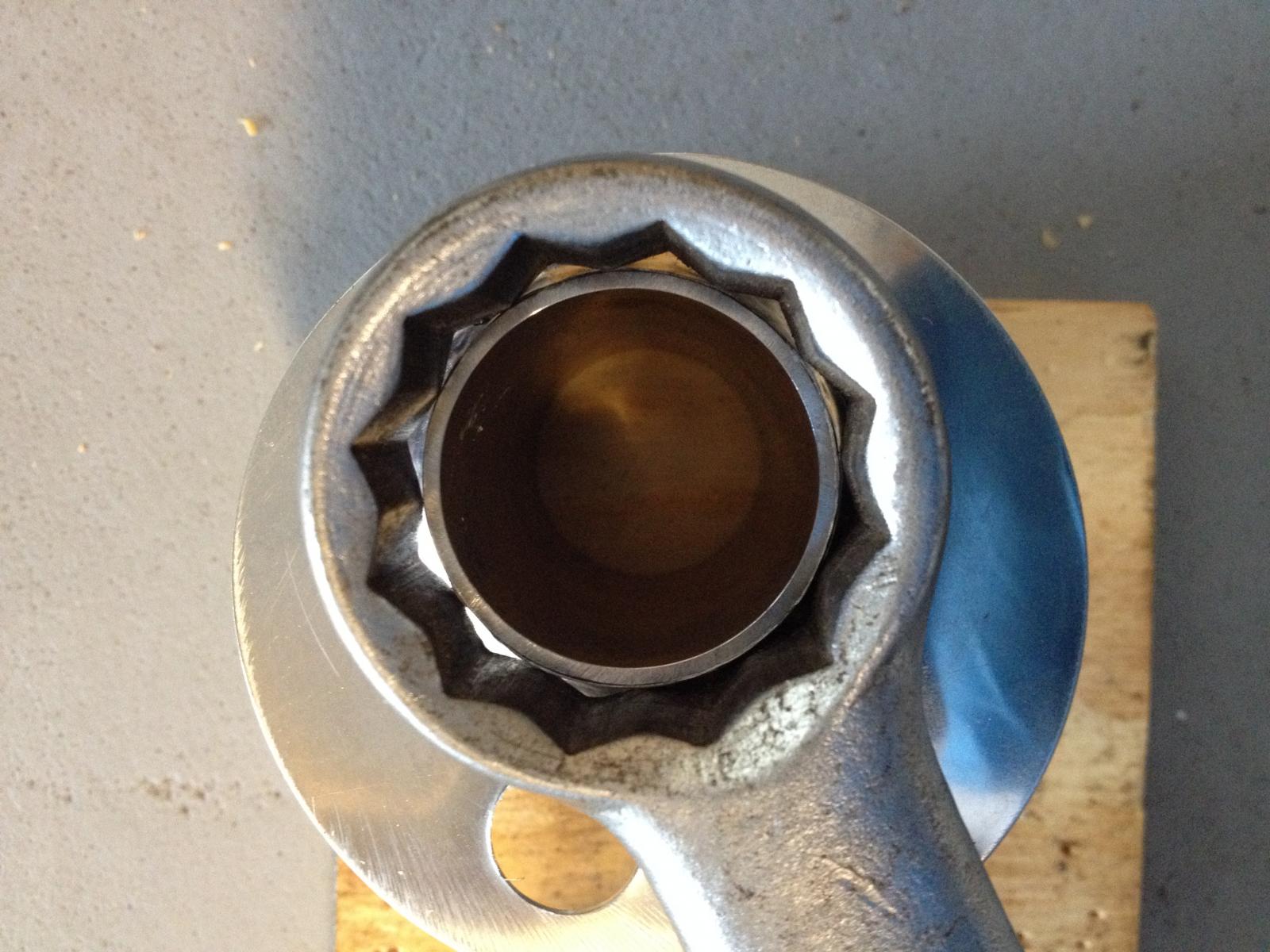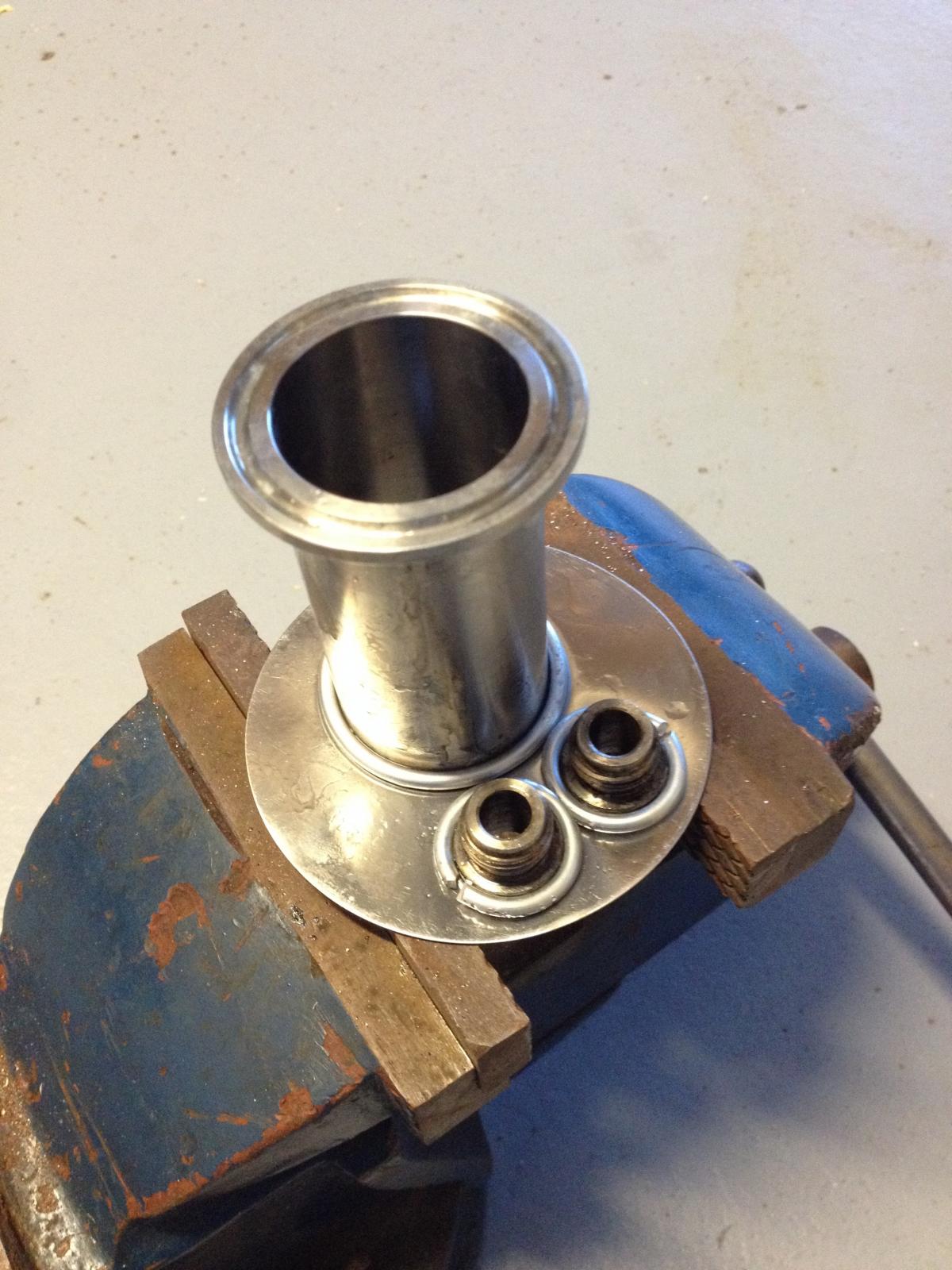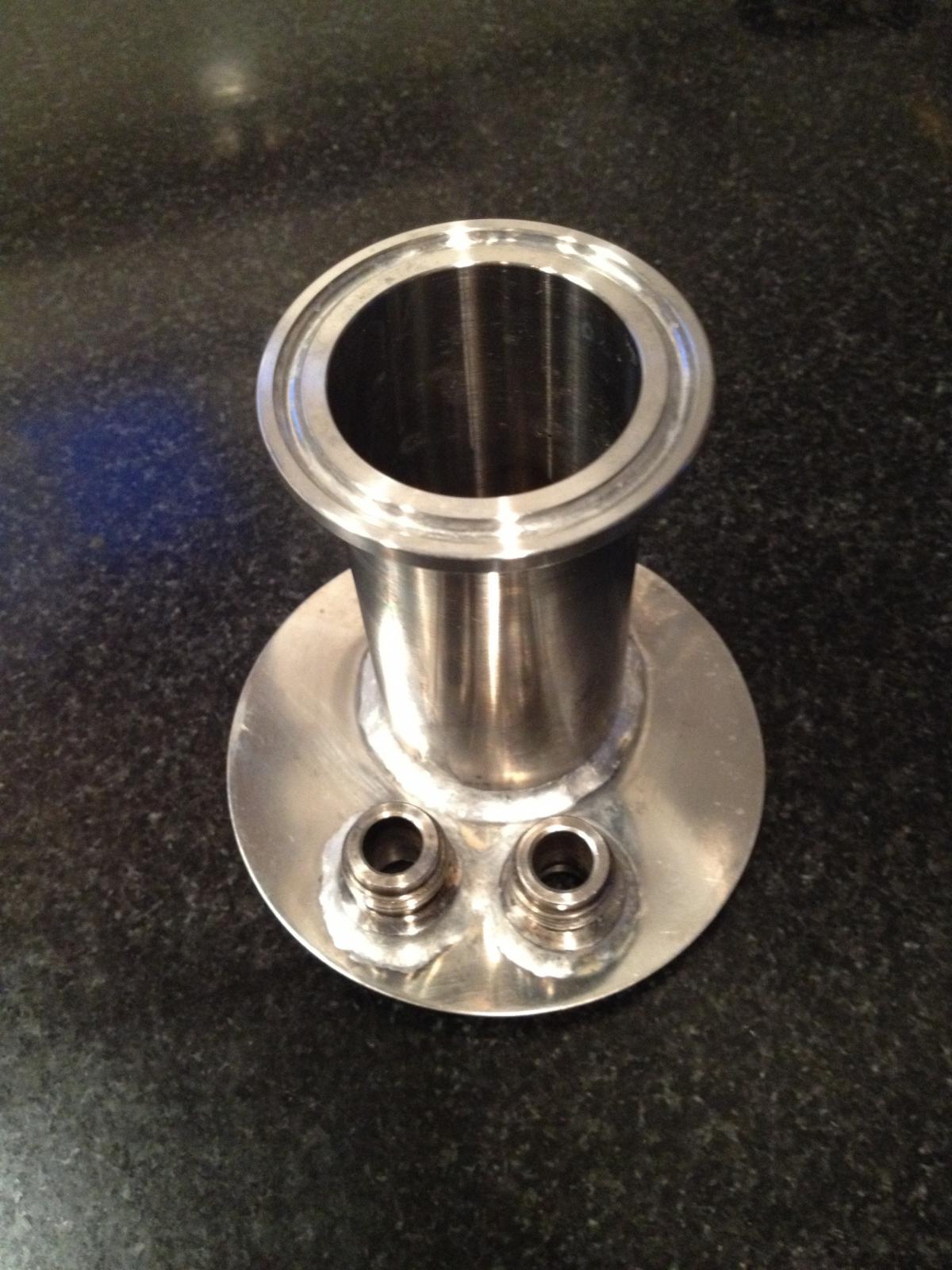OK - here are a few picture that show how I did this...
Pic #1 is just drilling holes in a lid - mark your layout and drill away. Since I want a ferrule and two posts (ala maierhof's yeast harvester rig), I have three holes to drill. I used a 1.5" TC ferrule so I ended up drilling a 1-3/8" hole with a step bit.
Pic #2: Next, I pulled a dimple on the lid (this is hard since that lid is so thin). Actually, I pushed the lid down over the ferrule. I happen to have a large closed end wrench that fit over the 1.5" ferrule and just hammered the wrench down on the lid until the ferrule pushed through. This is probably not worth the effort - one could just butt solder the ferrule to the lid, but pulling a dimple is stronger.
Clean and degrease everything that will be soldered. Afterwards I used gloves whenever I touched anything so as not to leave oils behind.
Pic #3: I wrapped each piece with solder and set it in place. Put down a little bit of flux at each joint and let the flux sit for a few minutes. Then, with a low-ish flame on a propane torch, I focused the flame on the item to be soldered to the lid and not the lid itself. I actually tilted the flame up and away from the lid. I let the item I was joining to the lid carry the heat into the lid and the solder. Once I saw the solder start to melt (it'll turn a shiny silver from a dull silver), I moved quickly to the far side of the fitting to apply heat and start melting the solder on that side. The residual heat on the first side of the joint finishes the soldering and wicking when you are working on the second side. When the second side starts to melt, just move around the joint to finish things off and to wick the solder into the joint. Pic #4 shows the lid with the finished solder joints.
Pic #5 shows the lid all cleaned up (fairly well - still not quite done, but I was tired of cleaning).
And Pics #6 and #7 show what I made. It's a jar lid that I can attach to my conical through the TC ferrule and pull trub/yeast out of. Pic #6 is just a shot of the underside of the lid showing the dimple that I pulled the ferrule through as well as the dip tubes coming through the posts. I now have a lid with a liquid-out post and a gas-in post. If I attach a jar full of water (for example) to the conical, I can put 1 or 2 psi of CO2 on the gas-in side and push all the water out - now I have a jar full of CO2. I open the butterfly valve and the CO2 (no oxygen) bubbles up through the wort and yeast/trub goes into the jar; close the valve and pull the jar. Or I can rouse dry hops as recommended by Vinnie Cilurzo - let CO2 bubble up through the settled dry hops. I think it's safe to say that I have the world's most expensive canning jar lid (that's a lot of stainless steel fittings that I used!). Hopefully, it will also be a useful lid!!!
Pliny











